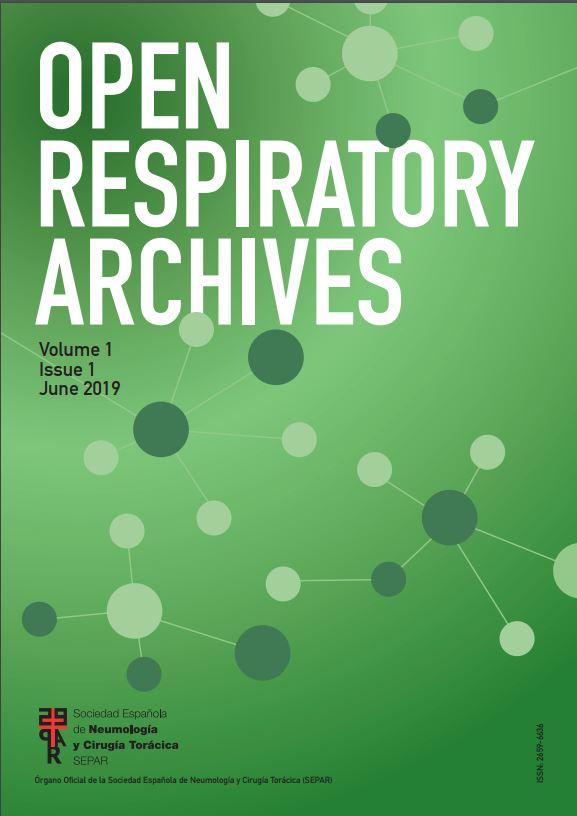A 57-year-old man with a history of diabetes, hypertension, and a previous gunshot wound to the anterior chest presented with three months of dysphonia, progressing to dyspnea, orthopnea, and edema in the lower limbs. Upon arrival, he exhibited dysphonia, biphasic stridor, tachypnea, accessory muscle use, and bilateral respiratory silence, leading to a diagnosis of hypercapnic respiratory failure. An emergency orotracheal intubation was performed, followed by invasive mechanical ventilation. Chest X-ray revealed an alteration in the mediastinum with a significant bulging of the right paratracheal line, suggesting a mediastinal mass displacing the trachea (Fig. 1A). Computed tomography showed a mediastinal mass causing extrinsic compression of the trachea (Fig. 1B) with a critical lumen of 1.5mm (Fig. 1C). A partially thrombosed saccular aneurysm of the postero-lateral wall of the brachiocephalic trunk measuring 8cm×7.2cm was identified, without rupture, compressing the superior vena cava, trachea, and adjacent structures (Fig. 1D). Surgical intervention was planned, including carotid-to-carotid bypass and aneurysm repair. Thoracic aortic aneurysms can lead to tracheal compression, presenting as dyspnea and stridor.1 Imaging evaluation is crucial for determining the relationship between the aneurysm and trachea, facilitating appropriate management, including surgical intervention in critical cases.2
(A) Anteroposterior chest X-ray at admission, shows a large, rounded, well-defined lesion that displaces the trachea and is suggestive of a mediastinal lesion (asterisk), which bulges the right paratracheal line. Note that the aortic knob is in a normal position (red arrow). (B) Contrast-enhanced chest CT (pulmonary window), showing extrinsic compression of the trachea above the carina (red arrow) due to a mediastinal mass. (C) The obstruction of the trachea is critical, with a diameter of 1.5mm. (D) Contrast-enhanced chest CT documenting a partially thrombosed saccular aneurysm of the postero-lateral wall of the distal segment of the brachiocephalic trunk (T), measuring 8cm×7.2cm×7.2cm, without signs of rupture, causing compression of the trachea, esophagus and segmental bronchi; limited luminal flow (asterisk). (E) Three-dimensional multiplanar reconstruction of the tomographic study, showing compression of the superior vena cava (black asterisk), right innominate vein (blue arrow), and pulmonary veins of the right upper lobe (yellow asterisk).
Written informed consent was obtained for the publication of patient information and images, either from the patient or a legally authorized representative.
FundingThis research did not receive any specific grant from funding agencies in the public, commercial, or non-profit sectors.
Authors’ contributionsDMS: original idea, original draft writing, review, and editing; MEO: original draft writing; LAJR: editing; GRV: review.
Conflicts of interestThe authors declare that there are no conflicts of interest to disclose.







